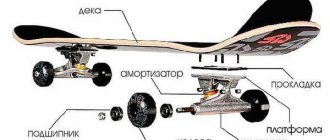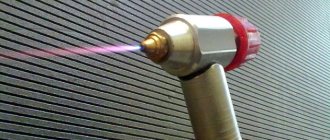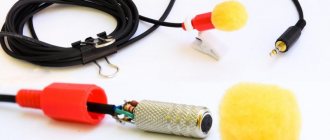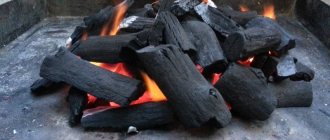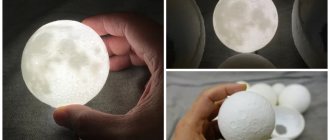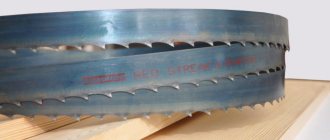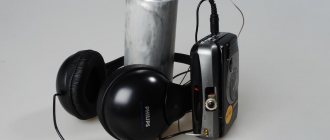Today we will talk about this type of processing of fish and meat as drying. Most fishermen and hunters prefer to eat dried fish or meat that they have caught themselves. If you think that drying fish and meat is so easy, then you are deeply mistaken. You can’t just take and hang food outside, under the scorching sun. In order for the entire drying process to take place without various problems and troubles, you need to make a special dryer for fish and meat. It will help you make quality products without much effort.
Don't assume that food will cook better in the dryer. It will only protect fish and meat from foreign animals and insects that want to eat or spoil the product. The most popular pests are calliphorids (green flies). They are very easy to distinguish from various other insects. These flies lay eggs in meat or fish, thereby spoiling it. If you don’t use a fish dryer, you can’t even hope that the product will be cooked without exposure to various parasites. After all, calliphorids will find food in absolutely any place. In addition, it is also worth considering the theft of products by domestic animals and birds of prey. Based on all the above factors, a dryer is simply necessary on the farm!
Ventilation and release of moist air
Warm, moist air must escape somewhere from the cabinet during the heating process.
To do this, a hole (d-100mm) is cut from the top and a plastic pipe is inserted there. If you want to do without plastic and pipes, make not one, but three holes of a smaller diameter (35mm) around the perimeter.
It is only advisable not to leave all these holes open, but to install some kind of protective grille or mesh there to prevent flies and insects.
But still, as operating experience shows, with one hole in the form of a pipe it is possible to maintain a more stable temperature regime than with three.
All dampness, smell and steam will go outside through this hood. During the drying process, do not forget to swap the trays, because the bottom row dries much faster due to the close proximity of the fan heater.
With a large harvest, processing it with a relatively small factory dryer is a very non-trivial and tedious task. And with the help of such a large cabinet you will do it quickly and with pleasure.
heating element or heater
What causes the temperature to rise, where does it come from and how does the heating occur? Everything is very simple - a floor-mounted wind blower room heater is used as a heating element and a fan at the same time.
Try not to use open heating elements for this. Firstly, it is a fire hazard. And secondly, you will have a problem installing them on the wooden base of the box while maintaining the permissible distances.
You'll have to think hard about what to lay them on or how to secure them. For example, someone “figured out” to put asbestos under the tile heating element.
Once again - ASBESTOS! In the fruit drying box! Don't ever do this.
There are no problems with the wind blower. Just place it on the bottom of the cabinet, and on the back wall to allow fresh air to flow in, use a jigsaw to cut a hole the size of the fan.
The hole must be made, otherwise the heater will simply overheat itself and catch fire.
Through the same “hole” the power wires with a plug are output.
Dryer installation
By following simple rules, you can quickly make a drying chamber. Consider an option based on a plastic box.
Step-by-step assembly process
- Using a jigsaw, cut a couple of holes in the opposite walls of the box.
- We place the hood in the first hole (fastening is done using liquid nails).
- The next hole will be required for the passage of air masses. We cover it with a mesh using an adhesive base.
- We secure the corners, creating a kind of shelf; its ledges will serve as the basis for fixing hooks and fish.
- The corners should be placed parallel to one another on opposite walls. If the height of the box allows, you can build several rows.
- We drill small holes in the corners, maintaining a distance of about 9-10 cm. All pairs of corners are equipped with identical holes.
- Using thick wire we make rods. To do this, we measure the box from one extreme point to the other and add a couple of cm on each side. Cut the required number of rods.
- On the first side, we bend the additional amount of rod, maintaining an angle of 90 degrees. Through the opposite side we string the catch (through the eyes). The second side is bent similarly to the first and inserted into a pre-prepared hole at the corners.
- By turning on the hood and covering the structure with a lid, you can use the dryer for its intended purpose!
A dryer made from wooden blocks is considered the simplest design
Deciding on the sizes
To load and unload your catch with maximum comfort, you should correctly determine the dimensions of the dryer. The best options would be the following dimensions:
- height indicator - about 120 cm;
- length – 100 cm;
- width – 75 cm.
In this case, the dryer will be spacious and will have at least three levels. Each level should be equipped with three metal rods, which will allow the catch to be suspended. A drying chamber with the indicated dimensions allows you to dry 80-100 crucian carp (weighing about 300-400 grams each) at a time.
Kinds
The simplest device for drying is considered to be a wire stretched under an awning or an ordinary rope for drying clothes. To protect against flies, a net (or gauze cloth) is simply hung on the fish. Hanging roach, crucian carp or bream is allowed either on hooks made of wire, from ordinary paper clips, or by clamping them with clothespins. This method is simple, but it is optimal for one-time harvesting of fish in a suburban area or during a camping trip. When the activity is put on the “conveyor belt”, and good catches are constant, you need to think about a relatively decent design.
Devices for drying fish can be symbolically divided into two large groups:
- mobile transportable (portable);
- stationary.
Each of these samples has its own advantages. The first ones can be used anywhere: from the river bank to the loggia in the apartment. Others can be listed as drying cabinets; in most cases, they are used not only for fish, but also for drying berries, herbs, vegetables, drying meat and other food purposes. You can simply dry the fish in the open air, or you can organize it with forced injection of air masses using a fan. At the same time, the withering procedure occurs much faster, and the product is prepared more proportionally. During the cold period, the drying cabinet can be equipped with electric heating elements, which, in turn, will also allow the fish to be prepared for consumption more quickly.
Factory models
Of the factory modifications, two options can be distinguished. The first is structurally implemented in the form of a tall cabinet made of steel tubes covered with mesh. Similar samples are produced by various companies under the Kedr and Mitek trademarks. Another interesting example is the two-level IdeaFisher ECO-2 installation. This collapsible design is also small in size and easily portable. Moreover, depending on the conditions, it functions both suspended and placed on the floor or table.
Homemade dryers
Among the mass of devices for drying fish, the following homemade designs should be noted:
- frame;
- foldable;
- stationary;
- hanging;
- electric dryer;
- with fan;
- mobile (portable).
First of all, it is necessary to clarify where exactly the drying will take place.
If under a canopy, awning or in the attic of an individual house, there are no difficulties with the dimensions. If in one of the living rooms, on a loggia or balcony of a multi-storey building, then the parameters of the future equipment for the dryer must be planned, starting from the possibility of placing it in these rooms for drying and further maintenance. In addition, it is necessary to take into account the size and quantity of fish caught during the previous fishing trip. Or balance these conditions for future catches. If the area is very small, you need to analyze modifications of folding and hanging dryers.
Connecting wires
After assembling the structure, solder the wires to the film, as discussed above, and lead them out through the holes in the side leg.
There, on the side, in order to hide all the wires out of sight, screw the cable channel.
And at the bottom you mount a switch to turn the dryer on and off. For power up to 2 kW, models with a rated current of 10 A are suitable.
You will have several conductors. Twice as many shelves. In our version there are five. Five on one side of the leg (phase), five on the other (zero).
To connect them together and output them with one cable, use a junction box.
Using two Wago clamps for six terminals, connect everything to one point (zero on one side, phase on the other) and connect one two-core 220V power cable here.
Roughly speaking, all the wires from the film on the right side are twisted into one wire. And all the wires from the left to the other. The result is two wires or two twists. It is to them that you need to connect a two-wire power cable with a plug.
Be sure to plug the plug into an outlet that is protected by an RCD or a circuit breaker!
When drying, it is recommended not to place pieces of fruits and vegetables directly on the film.
This film is made from the thermoplastic polymer PET (polyethylene terephthalate). And it can be food or non-food. In heated floors, as you understand, the second option is used.
Therefore, as mentioned above, be sure to cover the surface with baking paper. It also helps dry foods with a high juice content (berries).
Firstly, you will not have any direct contact with anything. Secondly, you will forever forget what sticking and cleaning the film from sweet spots means.
We make a fish dryer ourselves
To decide on the type of dryer, you should first understand what materials are currently available in the house.
The internal elements of the drying chamber consist of:
- strings;
- hooks
There do not seem to be any difficulties in manufacturing the elements described above. They are usually constructed from clotheslines, wire and strong threads (pre-twisted in 2-3 rows).
The body is considered the most significant and time-consuming part of the camera. It is he who will protect the caught catch from insects. Below are popular options for making dryers from improvised materials. The proposed instructions will allow you to quickly build a camera.
The body is considered the most significant and labor-intensive part of the camera; it is this that will protect the caught catch from insects
Blitz tips
- When drying fish, experts recommend blowing it with a fan for the first 24 hours , which will speed up the drying process and prevent the appearance of an unpleasant aroma.
- If you have large fish, it is recommended to pre-cut it so that the product does not spoil. The insides of large fish are full of greenery that rots from exposure to high temperatures.
- The drying chamber is usually installed away from sunlight (preferably under a canopy).
Features of salting and drying fish using a dryer
When preparing the resulting catch, you must remember the recommendations that allow you to properly dry and salt the fish:
- For a piquant taste, it is better to add several dozen black peppercorns and crushed bay leaves to the salt;
- To enhance the taste, some salt is mixed with sugar, the ratio should be 3:1;
- To prevent the fish from spoiling, it is better to gut it before salting or drying;
- Dried fish is very attractive to flies; to prevent their appearance, it is necessary to make special insect traps.
Let's celebrate! By following all the recommendations for drying and salting, you can end up with a delicious fish that you won’t be able to tear yourself away from.
Features of drying devices
To ensure the above conditions and the desired result, a homemade drying unit must meet certain technical requirements:
- the temperature inside it should be maintained at no more than 70°C, this will ensure maximum dehydration, but will not allow overdrying;
- The volume of the chamber should be calculated not only from the number of products intended for preparation, it is necessary to take into account part of the space for free air circulation <;
- the design of the device should allow you to adjust the drying time; if you assemble it yourself, this can be achieved by simply moving the baking sheets closer to the source of heat or air flow.
If necessary and if possible, the device can be equipped with heaters and thermostats, electric fans, and other equipment that will make its use more efficient and comfortable.
How to choose?
Having examined all modifications of dryers, the vast majority of fishermen trust time-tested hanging samples, which are made of a metal frame and nylon mesh fabric. The key advantages of such material are structural strength during drying, protection of fish from unnecessary contact with flies, experience accumulated over decades. The structure contains many levels, thereby guaranteeing the entry of clean air for the production of high-quality and non-hazardous food products. To dry fish after fishing, you can use hanging samples of various types. This is a well-known domestic manufacturer that carries out mass production and sale of everything needed for hunting and fishing.
Drying chamber with fan
This design is more intended for the city - at least it not only can, but should be located inside the building, since it requires electricity to operate.
You can use any box as a frame, only now with solid walls and the ability to close tightly. You can put it together with your own hands, but it is much more popular to use large (at least 20 liters) plastic containers for something.
The ventilation grille is usually built into the lid of the box, located on top, but a small vent-type exhaust fan is installed in one of the narrow side walls, so that with its efforts the air flow passes through the entire box. The presence of an electric fan allows you to completely eliminate the lack of draft due to the lack of free air circulation in the room, therefore even the dense walls of a plastic box will not interfere with the rapid achievement of results - in most cases, this design dries the fish faster than the classic one with a mesh and fresh street air. At the top of the box there are metal rods with nut threads, which are fastened on the outer sides with appropriate nuts - we will hang fish or other products on them.
At this point, the simplest design of a home drying cabinet could be completed, but some craftsmen offer options for improving the design. So, it’s no secret that for normal drying you need not only a constant flow of air, but also a fairly high temperature
, which in winter is not always achieved even indoors. A good solution to increase the temperature inside the cabinet is to use an electric mat - this product can be purchased at a pet store, as it is necessary for the comfort of most pet reptiles. You can go the other way by providing space inside the box for installing conventional incandescent light bulbs, which also heat up significantly during operation, but they will take up more space and may require numerous holes in the frame.
Both design options are quite effective, proven over years of operation and used by hundreds of thousands of our fellow citizens, as evidenced by positive reviews on various fishing forums. Another thing is that for beginners who decide to try drying fish or mushrooms on their own for the first time, the first pancake comes out lumpy. Out of ignorance, such people often commit poor design, although the reason for the spoilage of products or their very specific taste lies not in the crooked hands of the master, but in a banal failure to comply with the catch preparation technology.
For example, there is no point in drying fresh fish - the finished product will turn out completely tasteless and few people will like it. Before sending it to the drying cabinet, the fish must be salted for at least 10-12 hours, and not any salt can be used for this - only coarse-grained salt is suitable, and iodized and “Extra” are considered completely unsuitable for these purposes.
Another common mistake is to thoroughly wash the fish before salting - although this may seem unhygienic, it should not be done. The fact is that the inhabitants of the depths are already an excellent environment for the proliferation of various microorganisms, and the increased presence of water also contributes to this, at the same time slowing down the drying process.
How to connect infrared heating film
The main headache for many is connecting such a film to wires with a plug. For this you will need a soldering iron.
In fact, there is nothing complicated here. Everything is done literally one, two, three times.
To avoid burning the material, manufacturers recommend using a soldering iron with a power of no more than 60W.
First
Use a soldering iron to heat it up and remove the insulation from the side of the copper conductive strip.
The phase wire is connected on one side, and the neutral wire on the other.
Second
Drip tin onto this place.
Third
Press the tinned copper conductor onto the prepared surface and solder the contact.
That's all. Be sure to insulate the soldering areas with pieces of adhesive tape so that there are no exposed conductive parts left anywhere.
If even such a simple connection does not suit you (you don’t have a soldering iron and that’s it), then ask the store for special terminals.
Their price really bites, and the contact turns out to be less reliable. Therefore, soldering in this case is considered the best option.
Drying methods
In order to dry fish, you can use two main options for this process.
- Natural drying. It requires the presence of clean air in an open space or in a room with good ventilation.
- Artificial drying. It involves the use of one or another equipment that helps maintain the temperature required for the process.
Usually, at home, the natural option is most often used.
To achieve the best result, it is important to follow all the details of this process.
- The fish, which has been washed and soaked, must be strung on a fishing line, for which the head is usually pierced at the location of the eyes. You can use paper clips and hook the fish onto the lip. Large fish should be spaced with a toothpick in the middle of the carcass so that it dries evenly. Very small fish can be dried on a net stretched over a rigid frame.
- In summer, the bundles should be placed in a place or room where there is constant access to fresh air and the fish will be ventilated. You can’t leave it in the sun, because it can deteriorate and fat will drain from it.
- In spring and autumn, the optimal place for drying will be a canopy, where the sun does not reach, but the fish is constantly in the wind. In winter, it is convenient to carry out the procedure on a glazed balcony, in the attic, or even just in the kitchen.
- For natural drying, the air temperature should be between 18 and 20 degrees Celsius.
- When hanging carcasses, it is worth hanging them so that they are at a short distance from each other, without touching.
- When choosing a place to store your catch, you should make sure that there are no objects with a strong smell nearby, otherwise the fish will absorb their aroma.
- If it's a hot day, you shouldn't plan to dry the fish, because such carcasses can taste bitter.
The time until done will depend on the size of the fish and the time of year when the procedure is performed.
- In spring and summer, under optimal weather conditions, you can get the finished result after just a week, and in the case of very small fish, after just two days.
- In winter, when there is frost outside, for complete drying you need to wait from one to one and a half months, during which time the moisture inside will freeze out. In the case of drying in an apartment, the time is reduced to 1-2 weeks.
In an electric dryer
To dry fish in a vegetable dryer, it is important to choose a device in which you can turn off the heat in order to cook the carcass at a temperature not exceeding 30 degrees. Thanks to the presence of a fan in the device, a constant flow of air will be provided, which will make it possible to quickly dry the catch
In this case, the finished product will be received within a few days. But there is only one drawback - the room where the process will take place will be saturated with the smell of fish.
When using an electric dryer, it is also important to monitor the condition of the carcasses by constantly checking them. To understand whether the product is ready, you need:
- evaluate the appearance and structure of the fish - it should have a shine from fat, be dense but elastic;
- inspect the skin, which should remain tight so that it can be easily removed;
- check the scales, on which no salt crystals should be visible.
In the oven
Another option for drying fish at home involves using an oven, with which you can also quickly obtain the desired product. To cook, place the carcasses evenly on the oven rack, and place a sheet of foil under them. The required temperature for cooking is 80 degrees, otherwise the fish will be baked. As with other drying methods, there must also be access to oxygen, for which the door needs to be opened slightly.
After two hours of cooking, the heads of the fish are covered with foil, and everything goes back into the oven for 4-5 hours. When everything is ready, you need to hang each carcass and dry it for a few more days, after which they can be eaten.
On the balcony
Another option for drying fish in an apartment in winter involves placing it on a balcony or loggia. It needs to be hung at a distance, and any container placed under it to allow the liquid to drain. The best option would be a balcony with ventilation, where you can update the flow of fresh air using a special device. If there is none, then you need to keep the window sash ajar. It is best if there is a slight draft in this small room, which will allow the fish to dry faster.
It is best to place carcasses along a wall or across a balcony or loggia. Usually, under such conditions, fish is cooked for several weeks, but the final time will depend on the temperature of the room and the environment, which means it can either increase or decrease.
Request a call from a specialist
How to dry fish correctly? The process of drying and drying fish consists of several technological transitions, for which conditions for air speed, temperature and air humidity are determined and must be strictly maintained. As fish products dry, the air humidity level should gradually decrease. Forced evaporation of moisture should not be allowed, as this leads to compaction of connective tissues and prevents drying of the deeper layers of tissue. It is necessary to pause the drying process for some time to redistribute moisture in layers of different depths. The ratio of drying periods and breaks is 1:1.
As fish products dry, air humidity should gradually drop from 75% to 50%.
If the humidity is above 75%, drying slows down completely, and if the humidity is below 30 ... 40%, the surface tissues become denser and make it difficult to move moisture from the deep layers to the surface.
When air humidity is above 70%, dried fish quickly deteriorates during storage, therefore control of the humidity level is especially important.
Overheating of air when drying fish can lead to yellowing of fish products and loss of quality.
Additional options
You can list design options for drying fish ad infinitum.
Another popular additional option for a drying chamber is a product with an outlet grid.
When making such a dryer you cannot do without:
- hoods (80 cubic meters);
- output grids;
- duralumin corners (you will need a couple of pieces with a length corresponding to the length of the large side of the box);
- bolts (10-12 pieces will be required to fix the corners and hood);
- liquid nails;
- metal rods with a diameter of 3-4 mm - 10 pcs.
Step-by-step installation process
We mark the areas for the holes for the outlet and hood on the smaller sides of the drawer.
Dimensions should not be larger than the landing diameters of the outlet. Holes are cut using a jigsaw.
One of the holes accommodates the hood. You can fix it to the wall panel using 4 bolts.
The second hole is closed with a grille placed on the side border with liquid nails.
Alloy corners are fixed on two opposite sides of the dryer, in the lower and upper areas
Fastening is done with bolts.
6 holes (through) are drilled on the resulting shelves. It is very important to place them evenly on both corners. We construct metal rods from durable stainless wire in the required quantity
We construct metal rods from durable stainless wire in the required quantity.
We install the rods and use the drying chamber for its intended purpose.. Delicious, dried fish is the best addition to beer on a nice pleasant evening with friends
To save money and avoid buying dried fish at the store, you can make it yourself. How? Very simple and inexpensive, you just need to put in a little effort
Delicious, dried fish is the best addition to beer on a nice pleasant evening with friends. To save money and avoid buying dried fish at the store, you can make it yourself. How? Very simple and inexpensive, you just need to put in a little effort.
How to make a box for drying fish with your own hands?
To make a box, we will need some materials, as well as some skills in working with tools.
We will need:
Wooden beams;
Mosquito net;
Stapler;
Wood screws.
1.
First of all, we decide on the dimensions of our future box. We chose the size: 1 meter in height, 1 meter in length and 0.5 meter in width.
2.
We cut the beams to the size we need and sew them together using screws.
3.
To make the box more stable, we will strengthen it with several ribs.
4.
We hook the cables between the side ribs. They immediately perform two functions: they do not allow the frame to stretch, and we will hang fish on them.
5.
Let's start processing the wood. We open it in two layers with Bio-Doctor for bugs.
6.
After the wood has dried, we proceed to opening it with varnish. It should be opened in two layers, with an interval of 5 hours.
7.
After the varnish has dried, we will cover it with a mosquito net using a stapler. We cover it on almost all sides, we don’t cover the front side, that’s where we will have doors.
8.
We make doors in the same way using beams, mosquito nets, and attach them to hinges. They should close the box well.
Dryer made from plastic boxes
We select plastic boxes of any size and shape. Considering the poor air flow capacity of plastic, care must be taken to provide the chamber with an exhaust hood.
During production you cannot do without the following materials and tools:
- plastic corners (duralumin type);
- adhesive base (liquid nails);
- fasteners (bolts);
- screwdriver and jigsaw.
The main advantage of the plastic design is ease of assembly and operation. In addition, the structure can be disassembled, so keeping it clean will not be difficult.
Considering the poor air flow capacity of plastic, care must be taken to provide the chamber with an exhaust hood
Demountable hanging cabinet
In private homes, in most cases they resort to making a box covered on all sides with mosquito netting to protect against insects. Depending on the size, such a structure can be hung on a wall or even be multi-tiered and stand on the ground - then up to several dozen fish can be dried in it at the same time, but the likelihood of access by ground insects increases. The dimensions of the future box are determined only by you, based on your fishing abilities.
For good air access, the box should not have walls - in fact, we are simply talking about a contour frame.
For its manufacture, timber or wooden slats are usually chosen, whose thickness should never be less than 2.5 cm. Moreover, in many cases it makes sense to take thicker material if the structure will have many tiers, or its volume allows you to hang several kilograms at once fish. In order not to make a mistake with the amount of material purchased, you can draw up a drawing in advance.
For beauty, wood is often sanded and then painted, but it makes more sense to do the first procedure before assembling the structure, and the second after assembly. The polished slats are cut so as to make two identical rectangles, which will become opposite walls. They can be connected to each other either by several separate spacers, or by two more equal rectangles. After all this, you need to make another rectangle the size of one of the walls - it will serve as a door. For perfect correctness of all corners, most craftsmen advise using special small metal corners, sold somewhere in the vicinity of the same lumber.
When the frame is ready, if not painted, then at least varnished, because this way the wood, and even in outdoor conditions, will last much longer.
In the upper part of the box, as well as between the struts of the lower tiers, you need to stretch a string or wire on which the fish will be hung. Determine the density of the rows and the vertical distance between the rows based on the size of the catch you can usually boast of. When choosing among twine and different types of wire, focus on the ability to withstand rain and withstand the expected weight of the catch; it is also wise to provide an easy option for replacing sagging or torn pieces.
When this stage has been passed, you can begin covering it with mosquito netting - usually it is simply cut into fragments of the required size and simply nailed to the slats in a taut state. In this way, all sides of the box are finished, except for the one left for the door, and if you plan to hang it tightly on the wall, the opposite side may also be left without a mesh. The door itself is also covered with mesh, after which it is attached with hinges to the “doorway”. The final touch will be to create a “latch” of two or three nails, but here it is worth approaching the task as responsibly as possible so that not the slightest gap remains.
Many, by the way, do not want to make the door themselves, but specifically adjust the dimensions of the box to the size of a standard mosquito net for the window in order to use it as a door. Those who are completely lazy may not assemble any timber frame at all, simply connecting several of these grids together.
Some craftsmen don’t like the fact that when the door is open (at the stage of hanging fish or removing part of the prey), insects can get inside, so instead of doors they sew a zipper into the mesh. This can make the inlet hole much smaller and easier to control, but with this approach the mesh on that side usually deteriorates faster.
From plastic panels and corners
This design is similar to the model described above. The main difference in this case is the plastic box (ready-made), which is taken as the basis in the first version. The second option involves making it yourself, while specifying the desired dimensions.
When making a structure, you cannot do without the following materials:
- plastic models;
- guides;
- corners;
- finishing strips;
- adhesive base (liquid nails);
- wires for rods;
- hoods;
- mesh (performs the function of closing the inlet).
Assembling a dryer based on plastic panels and corners
- should be measured on the plastic panel .
- Cut off the required number of strips. To determine the quantity, you will need to divide the length and width (estimated) by the panel dimensions. At the end the number must be rounded.
- Parts for the surface of the bottom and lid of the drying chamber are cut out in a similar way.
- Installation of plastic panels is quite simple. One of the panels is fixed in a corner of the required length. The remaining panels are secured in the groove area using liquid nails.
- Having assembled the side to the end, we proceed to secure the upper part with the finishing strip. The lower part and the second edge are fastened with a corner.
- The following sides of the chamber are assembled in a similar manner. After this, we install the panels on the surface of the bottom of the structure.
- Having assembled the last side, we check that the finishing strip is placed in the upper part of the product along the entire length.
- The lid elements are glued together and the outer parts are improved thanks to the use of strips.
- We place the rods according to the same pattern as in the previous variation of installing a dryer from a box (plastic).
- We equip the product with a hood and use the structure for its intended purpose.
Fish meat dryer with fan
In order to make a dryer with a fan, you will need the following materials:
- Plastic container with lid. You can use a plastic box for children's toys.
- Hood with outlet grille. Sufficient fan power is 280 cubic meters. Instead of a ventilation hood, you can use a PC cooler.
- Threaded rod on M8 or M6, you can also use metal rods with a diameter of 3 mm.
- Nuts, washers, bolts.
The sequence of work for manufacturing a dehydrator is as follows:
- At the bottom of the drawer, on its short side, you need to mark with a marker the location for installing the ventilation hood. The location for fixing the grille for the hood is also marked; it is best if it is located on the lid. If this is not possible, it is built in on the opposite side of the fan in its upper part. The holes can be cut with a jigsaw, a circular saw of a suitable diameter, or use a drill with a thin drill: holes are drilled around the perimeter of the circle, then the jumpers between them are removed with a regular knife. If you heat the knife blade, the plastic will be cut easier.
- The fan and grille for the hood are installed in the prepared holes and fixed to the walls of the box with fasteners. The grating can be mounted on liquid nails.
- Next, you need to mark the location of the holes for the rod, which will hold the fish or pieces of meat during drying. To do this, masking tape is glued around the perimeter of the box, and markings are applied to it. The holes are drilled with a screwdriver or drill. Another option for attaching the drying rod is using aluminum corners. They are fixed on the long sides of the container with the shelf downwards, fastened with bolts, and through holes for the rod are installed on the shelves of the corners. With the help of such corners, you can make several rows inside the dryer.
- The threaded rod is cut into the required number of rods of the required length using a hacksaw.
- The rods are inserted into the holes and secured with nuts and washers. If you need to dry something large, you can unscrew the nuts and remove the rods.
- The fish is strung on rods through the eyes or attached to hooks and hung on rods. Then the container is closed with a lid, the fan is turned on, and the box is placed in any convenient place for several days.
Fish meat dryer with fan
Such a dehydrator is universal, since it is used not only for drying fish, but it is also a dryer for meat, vegetables or fruits. In addition, if you place thick parchment on the rods, you can dry small products - berries and mushrooms. The container dryer is quite spacious, airtight, and protects food from the penetration of any insects. How quickly food dries will depend on the temperature outside the dehydrator. You can modify such a dryer by installing a special timer adapter to set the operating time, as well as a device that supplies warm air inside.
Solar dehydrator with collector
A more complex version of the solar dryer (shown in the photo below) consists of two sections:
- air heating zone consisting of a collector;
- drying zones where products are placed.
The front parts of both zones are covered with transparent material, for example, glass, polycarbonate.
The collector is a box, the bottom of which is covered with a thin sheet of metal painted black. A heat insulator (mineral wool or sawdust) is placed under it to minimize heat loss. Air enters the heating zone through the ventilation holes. Then it goes up through the food shelves and out.
By installing black tubes as an absorbent, for example, painted aluminum corrugation, you can increase the temperature at which the air is heated by the collector.
For the device to work effectively, it must be constantly kept with the collector directed towards the sun . If the collectors are installed on three sides, then there is no need for rotation, and such a drying unit will work all day. All cracks are sealed with sealant.
Manufacturing of drying trays
Inside the cabinet, homemade nets are placed on the guides.
They are also assembled from wooden planks connected with construction angles.
Just don’t glue the pieces of wood together!
When heated, the glue will release toxic fumes. Therefore, only corners or a stapler.
It is better to choose a metal mesh made from food-grade stainless steel on which the products will be placed. It will not release any chemicals when heated.
Beekeepers filter honey through this. The only problem is to find it.
Many people advise not to bother and take the reinforcing material that goes under the plaster. It supposedly contains only fiberglass and nothing more.
However, do not forget that there is also a binding element - an epoxy compound. It is also not recommended to use a mosquito net.
It contains plastic and toxic paint. With such trays, after just a few years of abundant absorption of “healthy” dried fruits, oncology will definitely await you.
You shoot the mesh onto the bar with a stapler along the entire perimeter.
Such pallets are made in just a few hours. For the above cabinet sizes, the optimal number of nets inside is 4 pcs.
This is necessary so that warm air can circulate freely from both the back and front.
It is better to place the pallets themselves in such a way that the first is located close to the door, and the second to the back wall, etc.
With such a checkerboard layout, the warm flow will consistently blow tier after tier.
The tray is pushed in or placed on guide bars. They are made either wood or aluminum.
In this case, aluminum releases heat faster after heating. However, the question of its environmental friendliness and toxicity always remains open. Wood is still safer.
Thermal insulation of the drying cabinet
The inside of the entire cabinet and the door itself are covered with reflective foil material.
For example, this type is used for sauna cladding. It can withstand high temperatures and is absolutely harmless when heated to no more than 45C.
Attach it to staples from a construction stapler, or better yet, to self-tapping screws with a wide head.
Without this reflector, heat will be quickly transferred to the wooden walls. Firstly, it will delay the whole process. And secondly, if you used chipboard or fiberboard when assembling the frame, they will heat up, which will ultimately lead to food poisoning.
Also, do not line the walls with mirrored sheet metal.
Tin is primarily a metal. It will heat up and transfer all the heat to the wooden body. The thermal efficiency of such a dryer will drop sharply.
And from such heating, the body will gradually deform and wide cracks will form.
Assembling an infrared dryer
An infrared dryer is suitable for mushrooms, vegetables, nuts and fruits. It’s quite easy to make it yourself. To do this you will need the following materials:
- iron wire with a diameter of 5 to 8 mm;
- a cardboard box, for example, from a vacuum cleaner;
- aluminium foil;
- metal mesh;
- light bulb socket;
- awl;
- screwdriver;
- self-tapping screws;
- socket for a regular light bulb with fasteners;
- thermometer;
- infrared lamp;
- aluminum tape or glue.
The installation is created in the following sequence.
- The insides of the box are covered with aluminum foil using tape or glue.
- Shelves are made from mesh according to the size of the box.
- On any wall near the bottom, make a hole for the supply wire and secure the cartridge with self-tapping screws.
- Screw in the infrared bulb.
- A thermometer is attached to any sidewall.
- Cut the wire into pieces that are approximately 5 mm longer than the width of the box.
- Punch holes in the sides for the rods for the shelving.
- They insert a wire into them and seal its protruding ends with tape on the outside.
- Stack the shelves.
As a result, after all the manipulations, you will get an installation similar to that shown in the photo below.
The lid can be the side parts of the box, or it can be made separately from the same cardboard. If you want to automate the design, you should use a temperature sensor
. Under his control, the light will turn on automatically.
Also in the created design you can use an incandescent lamp (its sufficient power is 60 W) or a heating film
, used to create heated floors. In the latter case, at home, a piece of 50 by 100 cm with a power of 110 W is sufficient. In general, the length of the fragment is selected based on the box used.
When using film you will also need:
- insulation, for example, bitumen, used to create heated floors;
- a set consisting of 2 clamps, two eyelets and the same number of terminal rings, which is intended for connecting power to the film.
PVC tape is laid on top of the bitumen insulation. To connect the film, you will need to solder wires and contacts.
This dryer allows you to reach temperatures of almost 60 degrees
. It can be rolled up and placed on the bottom of a box made using the previously indicated method.
Simple solar dryer for fruits and vegetables
The solar dryer can be manufactured in various ways. At the same time, there is no energy consumption: vegetables or fruits are dried by the energy of the sun's rays. For summer residents, a simple design is suitable, which can be made using a hammer, saw, stapler and scissors. Work on creating the installation is carried out in the following sequence.
- A frame of the required size is assembled based on the required volumes of workpieces, for example, from wooden blocks 50 by 50 mm.
- It is sheathed on the sides and back with plywood or boards.
- The back wall is sheathed from the inside with a metal sheet.
- They paint the inside black so that the air heats up more.
- Shelves made of mesh, wire, plywood, tin, plastic and other materials are installed at an angle that provides the best exposure to sunlight.
- Ventilation holes are made in the upper and lower parts of the structure, the size of which must correspond to the dimensions of the installation.
- Cover them with gauze or mosquito net to prevent insects from entering the drying cabinet.
- The front part of the box is made in the form of a frame mounted on canopies.
- It is covered with glass, transparent plastic, polycarbonate or plastic film (secured with a stapler).
- A stand for the box is made from bars or metal pipes.
Also, the created structure can simply be supported on anything. A possible appearance is shown in the photo below.
In such a cabinet, by heating the metal sheet, a temperature of 40-50 degrees is achieved. Ventilation ensures the removal of moisture released from the fruit.


